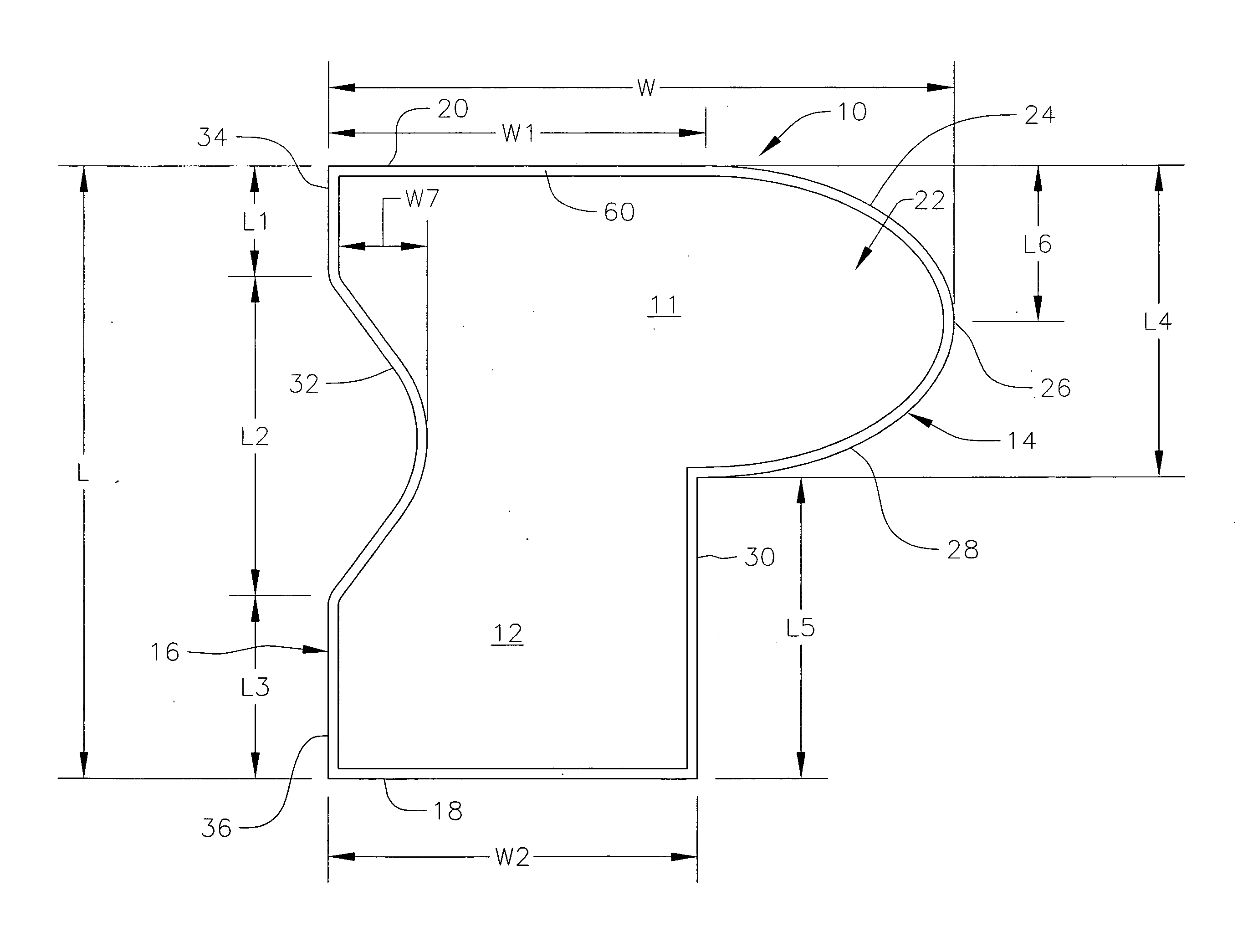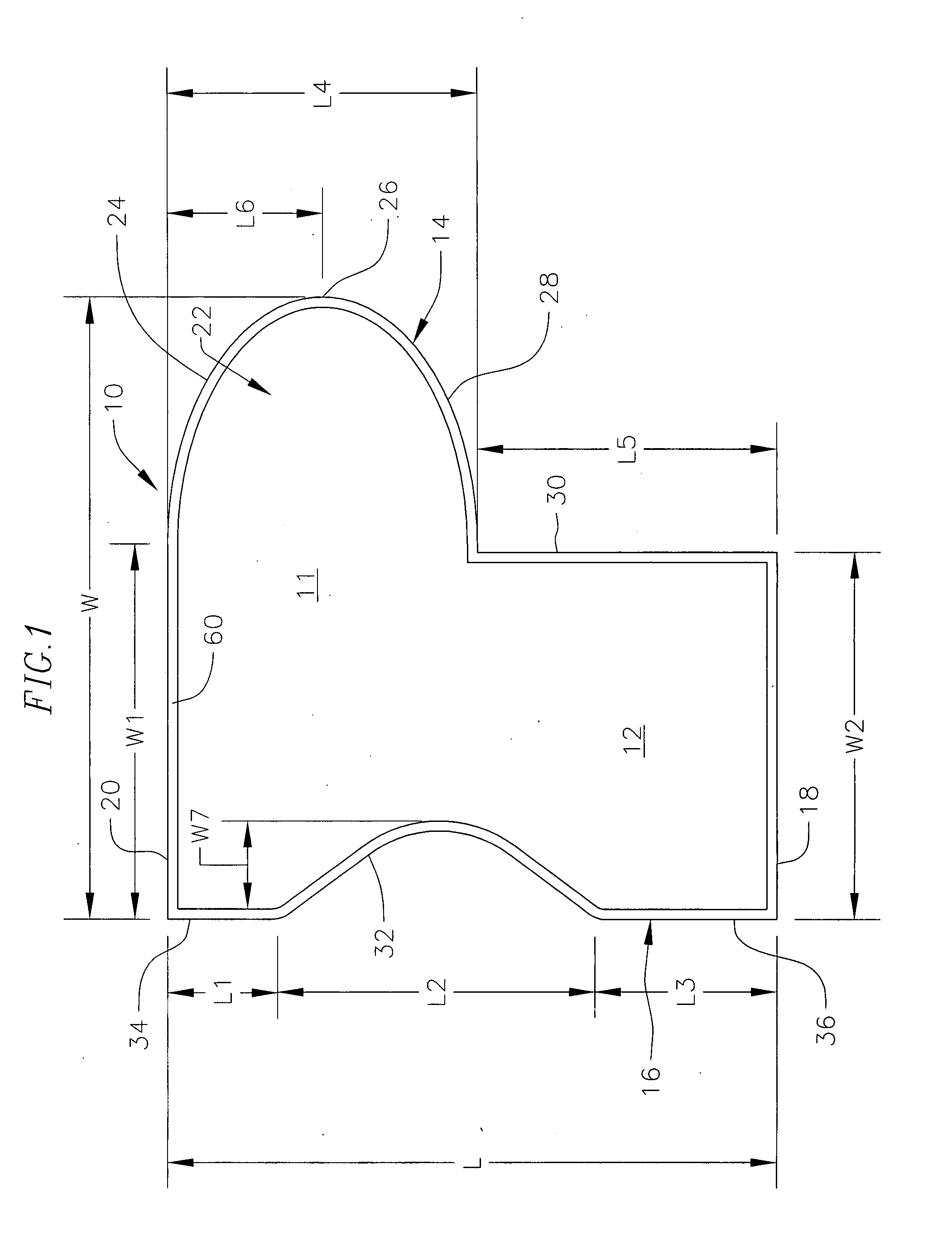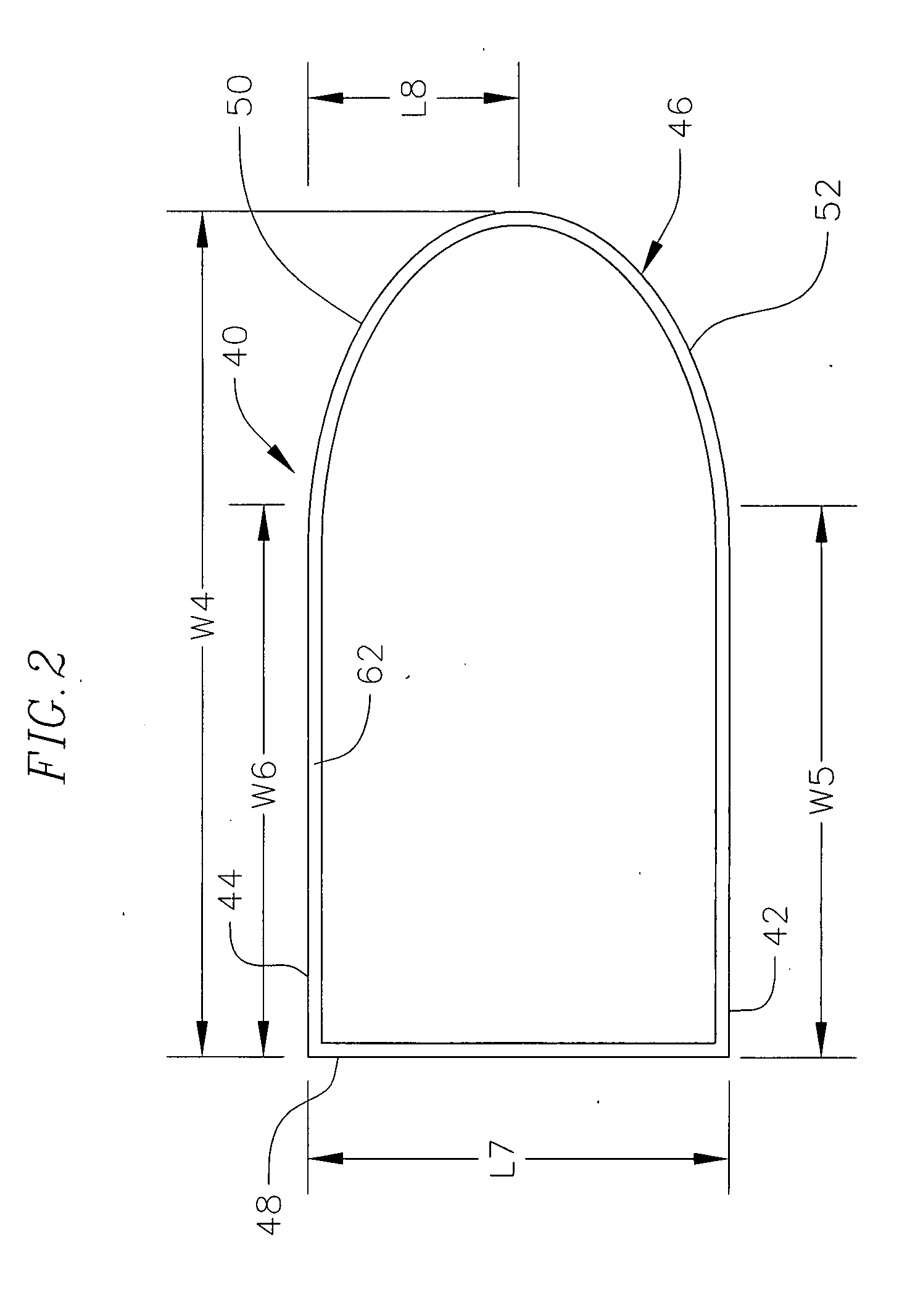Encasement prevention barrier for use in anterior lumbar surgery
a technology for preventing barriers and anterior lumbar surgery, which is applied in the field of improved encasement prevention barriers, can solve the problems of difficult re-mobilization, significant risk of re-exposure, and extremely difficult re-entry into the retroperitoneal space on a re-operation, so as to facilitate use, prevent or minimize adhesions and fibrous attachments, the effect of facilitating us
- Summary
- Abstract
- Description
- Claims
- Application Information
AI Technical Summary
Benefits of technology
Problems solved by technology
Method used
Image
Examples
example 1
[0044]A two-level, L4-5, L5-S1 barrier as shown in FIG. 1 is described as follows:
[0045](1) The barrier structure is colored in light green or blue (or any other color other than red or yellow that will diminish the barrier from normal tissues) with a 2 mm border 60 of dark green or blue to identify the edges from the body of the barrier.
[0046](2) 0.1 to 5 mm thick depending on the material to be used for the barrier.
[0047](3) 9.5 to 10.5 cm high (dimension L) at its highest point with two widths.[0048](a) The upper section 11 has a width of 9-10 cm (dimension W) with a tapered tongue starting at 58-60 mm (dimension W1) from the left edge and ending with a height of 2 cm (dimension L6). This upper section is 4-5 cm high (dimension L4).[0049](b) The lower section is 58-60 mm wide (dimension W2) and 4-5 cm high (dimension L5).[0050](c) The upper width W1 and lower width W2 are approximately the same.
[0051](4) On the left margin a curved waist starts at 2 cm (dimension L1) from the upp...
example 2
[0054]The single level and multiple level above L4-5 barrier as shown in FIG. 2 is described as follows:
[0055](1) The barrier structure is colored in light green or blue (or any other color other than red or yellow that will distinguish the barrier from normal tissues) with a 2 mm border 62 of dark green or blue to identify the edges from the body of the barrier.
[0056](2) 0.1 to 5 mm thick depending on the material to be used for the barrier.
[0057](3) 4 to 5 cm high or long (dimension L7) with a tapering right edge starting at 58 to 60 mm from the left edge (dimension W6) and ending at 9 to 10 cm from the right edge (dimension W4), with the taper down to 2 cm in height (dimension L8) at the left edge.
[0058](4) 9-10 cm wide (dimension W4) with the tapered edge 50 on the right.
[0059](5) The purpose of the right side extension as a tongue is to allow placement over the psoas muscle to act as an early identifier of the barrier upon re-operation.
PUM
 Login to View More
Login to View More Abstract
Description
Claims
Application Information
 Login to View More
Login to View More - R&D
- Intellectual Property
- Life Sciences
- Materials
- Tech Scout
- Unparalleled Data Quality
- Higher Quality Content
- 60% Fewer Hallucinations
Browse by: Latest US Patents, China's latest patents, Technical Efficacy Thesaurus, Application Domain, Technology Topic, Popular Technical Reports.
© 2025 PatSnap. All rights reserved.Legal|Privacy policy|Modern Slavery Act Transparency Statement|Sitemap|About US| Contact US: help@patsnap.com



